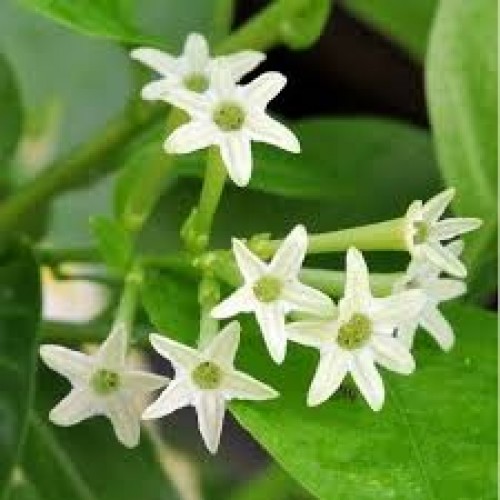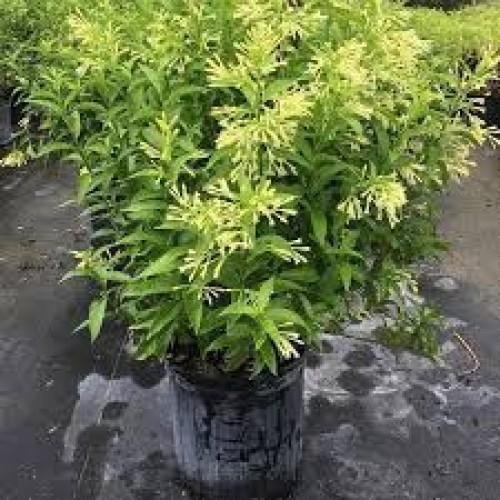60%
off
off
-
Sold
-

-

out
Raat Ki Rani (Cestrum nocturnum)
Raat Ki Rani, also known as Night-Blooming Jasmine or Night Queen, is a fast-growing, evergreen shrub native to tropical regions of the Americas. Renowned for its intoxicating fragrance that intensifies during the night, this plant is a favorite among gardeners and herbalists alike.
Botanical Overview
- Scientific Name: Cestrum nocturnum
- Family: Solanaceae
- Common Names: Raat Ki Rani, Night-Blooming Jasmine, Night Queen
- Origin: Tropical regions of the Americas
- Growth Habit: Evergreen shrub or small tree
- Height: 6 to 10 feet (1.8 to 3 meters)
- Flowering Season: Blooms year-round in tropical climates, with peak blooming in summer
Key Features
- Flowers: Clusters of tubular, greenish-white or yellow flowers that emit a strong, sweet fragrance at night.
- Foliage: Glossy, lance-shaped leaves that provide a lush backdrop to the blooms.
- Growth Habit: Fast-growing and sprawling, making it ideal for trellises, fences, or as a hedge.
- Pollinator Attraction: The fragrant flowers attract nocturnal pollinators, including moths and bats.
Cultivation & Care
- Sunlight: Requires full sun to partial shade; at least 6 hours of direct sunlight daily is ideal.
- Soil: Prefers well-draining, fertile soil with a pH between 6.6 and 7.5.
- Watering: Water regularly to keep the soil moist, especially during the growing season. Reduce watering during the dormant period in winter.
- Fertilization: Apply a balanced, slow-release fertilizer in early spring to promote healthy growth and flowering.
- Pruning: Prune after flowering to maintain shape and encourage new growth. Regular pruning helps control its spreading habit.
- Propagation: Propagate through semi-hardwood cuttings taken in late summer or early fall.
- Pest Management: Generally pest-resistant but may occasionally attract aphids or caterpillars; treat infestations promptly.
Uses & Benefits
- Ornamental: Popular in gardens for its fragrant blooms and attractive foliage; often used in hedges or as a specimen plant.
- Medicinal: Traditional uses include treating pain and inflammation; however, all parts of the plant are toxic if ingested, so caution is advised. [Source]
- Aromatherapy: The plant's fragrance is used in aromatherapy to relieve stress and anxiety by increasing serotonin levels in the brain. [Source]
- Environmental: Acts as a natural air purifier and supports local pollinator populations.
Considerations
- Toxicity: All parts of the plant are toxic if ingested; keep away from children and pets.
- Invasiveness: In some regions, it is considered invasive; regular pruning helps control its spread.
- Climate Sensitivity: Sensitive to frost; best suited for tropical and subtropical climates. In colder regions, it can be grown in containers and brought indoors during winter.